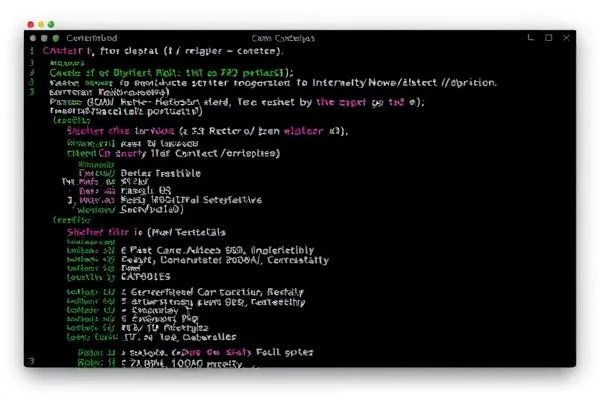Uncovering Vulnerabilities and Protecting Your Online Assets
Web application security has become a top priority for businesses. With the increasing threat of cyber attacks and data breaches, it’s essential to ensure the safety and protection of your online assets. This is where web application penetration testing comes into play. By actively examining your web application for vulnerabilities, you can identify and address potential weaknesses before hackers exploit them.
In this comprehensive guide, we will delve into the world of web application penetration testing, providing you with the knowledge and tools to uncover vulnerabilities and fortify your online assets. From understanding the importance of penetration testing to exploring different testing methodologies, we will cover it all. You will learn how to conduct penetration testing efficiently, interpret and prioritize the findings, and implement robust security measures.
Whether you are a business owner or a security professional, this guide will equip you with the necessary expertise to safeguard your web applications and protect your sensitive data from potential threats. So, let’s embark on this journey to strengthen your defenses and ensure the utmost security of your online assets.
Importance of web application security
In today’s digital landscape, web applications have become the backbone of many businesses, serving as the primary interface between organizations and their customers, partners, and stakeholders. These web-based platforms handle sensitive data, facilitate critical business transactions, and enable seamless user experiences. However, the increasing reliance on web applications also brings with it a heightened risk of cyber threats and data breaches.
As the number of web applications grows, so does the attack surface for malicious actors. Vulnerabilities in web application code, misconfigurations, and weak security controls can provide entry points for hackers to gain unauthorized access, steal sensitive information, disrupt operations, and even hijack entire systems. The consequences of a successful web application attack can be devastating, leading to financial losses, reputational damage, regulatory fines, and the erosion of customer trust.
Web application security has become a top priority for businesses of all sizes, from small startups to large enterprises. Protecting your web applications is not just a matter of compliance; it’s a strategic imperative that can mean the difference between thriving in the digital age or succumbing to the devastating effects of a cyber attack. By proactively addressing web application vulnerabilities and implementing robust security measures, organizations can safeguard their online assets, ensure the privacy and integrity of sensitive data, and maintain the trust of their stakeholders.
Understanding the different types of vulnerabilities
Web applications can be susceptible to a wide range of vulnerabilities, each posing unique threats and requiring specific mitigation strategies. Understanding the different types of vulnerabilities is crucial for effectively securing your web applications.
One of the most common and well-known vulnerabilities is the SQL injection (SQLi) flaw. This occurs when user input is not properly sanitized, allowing malicious SQL code to be injected into the application’s database queries. This can lead to unauthorized data access, modification, or even complete control of the database.
Another prevalent vulnerability is cross-site scripting (XSS), which happens when user input is not properly encoded, allowing an attacker to inject malicious scripts into web pages. These scripts can be used to steal sensitive information, hijack user sessions, or even redirect users to malicious websites.
Web applications may also be vulnerable to cross-site request forgery (CSRF) attacks, where an attacker tricks a user into performing unintended actions on the web application, such as transferring funds or modifying sensitive data, without the user’s knowledge or consent.
Other common vulnerabilities include insecure direct object references (IDOR), where attackers can access sensitive data by manipulating object references, and broken authentication and session management, which can lead to unauthorized access to user accounts.
Staying up-to-date with the latest web application vulnerabilities and understanding their potential impact is essential for implementing effective security measures and protecting your online assets.
The process of web application penetration testing
Web application penetration testing is a comprehensive process that involves systematically identifying, exploiting, and reporting vulnerabilities within a web application. This process is crucial for organizations to uncover potential weaknesses and address them before they can be exploited by malicious actors.
The first step in the web application penetration testing process is the reconnaissance phase, where the tester gathers information about the target application, its infrastructure, and its attack surface. This includes gathering information about the web application’s domain, subdomains, IP addresses, and any publicly available information about the application and its components.
Next, the tester conducts vulnerability scanning, using specialized tools and techniques to identify potential vulnerabilities within the web application. This may include testing for common vulnerabilities like SQL injection, cross-site scripting, and authentication weaknesses, as well as more complex issues like business logic flaws and insecure data handling.
Once the vulnerabilities have been identified, the tester moves on to the exploitation phase, where they attempt to actively exploit the discovered vulnerabilities to gain unauthorized access, escalate privileges, or obtain sensitive information. This phase is crucial for understanding the true impact of the vulnerabilities and the potential damage that could be caused by a successful attack.
After the exploitation phase, the tester documents their findings and provides a comprehensive report to the client. This report includes a detailed description of the vulnerabilities, the potential impact, and the steps required to mitigate the identified risks. The report also includes recommendations for improving the overall security posture of the web application and the organization’s security practices.
By following this structured process, web application penetration testing helps organizations identify and address vulnerabilities before they can be exploited by malicious actors, ultimately strengthening the security of their online assets.
Tools and techniques used in web application penetration testing
Web application penetration testing relies on a wide range of tools and techniques to effectively identify, exploit, and report vulnerabilities. These tools and techniques are constantly evolving to keep pace with the ever-changing landscape of web application security threats.
One of the most widely used tools in web application penetration testing is Burp Suite, a comprehensive suite of tools that includes a web proxy, scanner, and vulnerability analysis capabilities. Burp Suite allows testers to intercept and modify web traffic, identify vulnerabilities, and even automate the exploitation process.
Another popular tool is Nmap, a network scanning and discovery tool that can be used to gather information about the target web application’s infrastructure, including its IP addresses, open ports, and running services. This information is crucial for understanding the application’s attack surface and identifying potential entry points for further testing.
Specialized web application vulnerability scanners, such as OWASP ZAP (Zed Attack Proxy) and Arachni, are also commonly used in web application penetration testing. These tools can automatically scan web applications for a wide range of vulnerabilities, including SQL injection, cross-site scripting, and other common weaknesses.
In addition to these tools, web application penetration testers also employ various techniques to identify and exploit vulnerabilities. These may include manual code review, fuzzing (sending malformed input to the application to identify potential vulnerabilities), and social engineering tactics to gather information or gain unauthorized access.
The choice of tools and techniques used in web application penetration testing depends on the specific requirements of the engagement, the complexity of the target application, and the level of expertise of the testing team. By leveraging a combination of these tools and techniques, web application penetration testers can effectively uncover vulnerabilities and provide valuable insights to organizations for strengthening their web application security.
Common vulnerabilities and how to mitigate them
Web applications can be susceptible to a wide range of vulnerabilities, each with its own unique characteristics and mitigation strategies. Understanding these common vulnerabilities and how to address them is crucial for maintaining the security of your web applications.
One of the most well-known and prevalent vulnerabilities is SQL injection (SQLi). This occurs when user input is not properly sanitized, allowing an attacker to inject malicious SQL code into the application’s database queries. To mitigate SQL injection, it’s essential to implement input validation and parameterized queries, which separate the user input from the SQL code and prevent the injection of malicious code.
Cross-site scripting (XSS) is another common vulnerability, where user input is not properly encoded, allowing an attacker to inject malicious scripts into web pages. To prevent XSS attacks, it’s crucial to properly encode and sanitize all user input before displaying it on the web page, and to implement Content Security Policy (CSP) to restrict the types of scripts that can be executed on the page.
Cross-site request forgery (CSRF) is a vulnerability that allows an attacker to trick a user into performing unintended actions on a web application, such as transferring funds or modifying sensitive data. To mitigate CSRF attacks, web applications should implement CSRF tokens, which are unique, session-specific values that are included in all form submissions and verified by the server to ensure the request is legitimate.
Insecure direct object references (IDOR) occur when web applications expose internal object references, such as file paths or database IDs, that can be manipulated by an attacker to access sensitive data. To address IDOR vulnerabilities, web applications should implement access controls and restrict direct access to internal objects based on the user’s permissions.
Broken authentication and session management vulnerabilities can lead to unauthorized access to user accounts. To mitigate these issues, web applications should implement strong authentication mechanisms, such as multi-factor authentication, and ensure that session management is secure, with proper session invalidation and timeout policies.
By understanding these common web application vulnerabilities and implementing the appropriate mitigation strategies, organizations can significantly reduce the risk of successful cyber attacks and protect their online assets.
Best practices for secure web application development
Developing secure web applications requires a proactive and comprehensive approach that incorporates security best practices throughout the software development lifecycle. By following these best practices, organizations can build web applications that are more resilient to cyber threats and better protect their online assets.
One of the fundamental best practices is to implement secure coding principles, such as input validation, output encoding, and the use of parameterized queries for database interactions. These practices help to prevent common vulnerabilities like SQL injection and cross-site scripting, which are among the most prevalent and dangerous threats to web applications.
Another crucial best practice is to adopt a secure software development lifecycle (SDLC) methodology, such as the Secure SDLC (S-SDLC) or the Agile Security Engineering (ASE) framework. These methodologies integrate security considerations into each phase of the development process, from requirements gathering to deployment and maintenance, ensuring that security is a priority throughout the entire lifecycle.
Web application security also requires a strong focus on authentication and authorization mechanisms. Best practices include the use of strong password policies, multi-factor authentication, and role-based access controls to ensure that only authorized users can access sensitive data and perform critical actions within the application.
Secure configuration management is another essential best practice for web application security. This includes maintaining up-to-date software and libraries, implementing secure default configurations, and regularly reviewing and updating the application’s security settings to address emerging threats and vulnerabilities.
Lastly, continuous monitoring and testing are crucial for maintaining the security of web applications. This includes regular vulnerability assessments, penetration testing, and the implementation of web application firewalls (WAFs) and other security tools to detect and mitigate threats in real-time.
By adopting these best practices for secure web application development, organizations can significantly reduce the risk of successful cyber attacks, protect their online assets, and maintain the trust of their customers and stakeholders.
The role of penetration testing in compliance and regulatory requirements
Web application penetration testing plays a critical role in helping organizations meet various compliance and regulatory requirements. As the threat landscape continues to evolve, many industries and jurisdictions have implemented stringent regulations and standards to ensure the security and privacy of sensitive data.
One of the most well-known regulatory frameworks is the Payment Card Industry Data Security Standard (PCI DSS), which applies to any organization that processes, stores, or transmits credit card data. PCI DSS requires regular penetration testing of web applications to identify and address vulnerabilities that could be exploited by malicious actors to gain unauthorized access to cardholder data.
The Health Insurance Portability and Accountability Act (HIPAA) in the United States is another example of a regulatory framework that emphasizes the importance of web application security. HIPAA mandates the protection of electronic protected health information (ePHI), and web application penetration testing is a crucial component of ensuring the confidentiality, integrity, and availability of this sensitive data.
In the European Union, the General Data Protection Regulation (GDPR) has become a pivotal regulation that requires organizations to implement robust security measures to protect the personal data of EU citizens. Web application penetration testing is a key part of GDPR compliance, as it helps identify and mitigate vulnerabilities that could lead to data breaches and the unauthorized processing of personal information.
Beyond specific regulatory frameworks, many organizations also have internal security policies and standards that mandate regular web application penetration testing. These internal requirements are often driven by the need to protect sensitive business data, maintain the trust of customers and stakeholders, and ensure the overall resilience of the organization’s online assets.
By conducting comprehensive web application penetration testing, organizations can not only meet their compliance obligations but also gain valuable insights into the security posture of their web applications. This, in turn, allows them to prioritize and address the most critical vulnerabilities, ultimately strengthening their overall security and reducing the risk of costly data breaches or regulatory fines.
Benefits of hiring a professional penetration testing service
In the rapidly evolving landscape of web application security, hiring a professional penetration testing service can provide organizations with a significant advantage in protecting their online assets. These specialized service providers offer a range of benefits that can greatly enhance an organization’s security posture.
One of the primary benefits of hiring a professional penetration testing service is access to a team of highly skilled and experienced security experts. These professionals possess in-depth knowledge of the latest web application vulnerabilities, attack techniques, and mitigation strategies. They can leverage their expertise to conduct comprehensive and thorough assessments, uncovering vulnerabilities that may have been missed by internal security teams.
Professional penetration testing services also have access to a wide range of specialized tools and technologies, which they can utilize to automate certain testing processes and uncover even the most sophisticated vulnerabilities. This level of expertise and tooling can be difficult and costly for organizations to maintain in-house, making outsourced penetration testing a more efficient and cost-effective solution.
Moreover, professional penetration testing services often have a deep understanding of industry-specific compliance and regulatory requirements, such as PCI DSS, HIPAA, and GDPR. They can tailor their testing approach to ensure that organizations meet these stringent standards, reducing the risk of costly fines and penalties.
Another significant benefit of hiring a professional penetration testing service is the objectivity and independence they bring to the assessment process. Unlike internal security teams, who may have inherent biases or preconceptions about the organization’s web applications, external penetration testers can provide an unbiased and impartial evaluation of the security posture. This can lead to the identification of vulnerabilities that might have been overlooked or downplayed by internal stakeholders.
Finally, professional penetration testing services can offer a comprehensive and detailed reporting of their findings, including a prioritized list of vulnerabilities, their potential impact, and clear remediation recommendations. This invaluable information can help organizations allocate their resources effectively, address the most critical security issues, and continuously improve the security of their web applications.
By leveraging the expertise and capabilities of a professional penetration testing service, organizations can significantly enhance the security of their web applications, mitigate the risk of cyber threats, and ensure the protection of their online assets.
Conclusion: Ensuring the security of your web applications
In the digital age, the security of web applications has become a paramount concern for businesses of all sizes. As the reliance on web-based platforms continues to grow, the need to proactively address vulnerabilities and protect online assets has become increasingly critical.
Through this comprehensive guide, we have explored the importance of web application security, the different types of vulnerabilities, the process of web application penetration testing, and the tools and techniques used to uncover and mitigate these vulnerabilities. We have also discussed the role of penetration testing in compliance and regulatory requirements, as well as the benefits of hiring a professional penetration testing service.
By understanding and implementing the best practices for secure web application development, organizations can significantly reduce the risk of successful cyber attacks and protect their sensitive data, critical operations, and customer trust. Regular web application penetration testing is a crucial component of this comprehensive security strategy, as it allows organizations to identify and address vulnerabilities before they can be exploited by malicious actors.
Whether you are a business owner, a security professional, or an IT administrator, the insights and recommendations provided in this guide can help you strengthen the security of your web applications and safeguard your online assets. By taking a proactive and holistic approach to web application security, you can position your organization for success in the digital landscape and ensure the long-term resilience of your web-based platforms.









